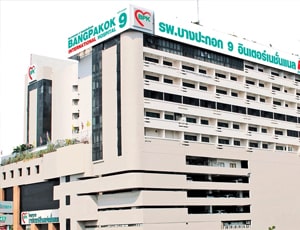The average cost of CABG - Redo in Bangkok approximately starts from USD 35000
Treatment cost

Types of CABG - Redo in Bangpakok 9 International Hospital and its associated cost
| Treatment Option | Approximate Cost Range (USD) | Approximate Cost Range (THB) |
|---|---|---|
| CABG - Redo (Overall) | 33437 - 44718 | 1204877 - 1571558 |
| Traditional CABG - Redo | 31020 - 42825 | 1140522 - 1516436 |
| Off-Pump CABG - Redo | 35364 - 47713 | 1271018 - 1694298 |
| Minimally Invasive CABG - Redo | 38671 - 50367 | 1416080 - 1787054 |

Awaxy called plaque hets deposited in good amounts in the coronary arteries of the heart, they supply oxygen to the heart. With time the plaque starts hardening and eventually ruptures and breaks open. This plaque interferes with blood flow as arteries grow narrow at that region. A blood clot develops when the plaque ruptures open on the surface. The artery gets blocked if the blood clot developed is very large. This can be the cause of heart attack in a later stage becoming the cause of a life risk.
Coronary artery bypass surgery aims at improving the general blood circulation to the heart. A healthy artery or vein is taken the body and is grafted or connected to the blocked coronary artery for bypassing. This artery or vein goes around the blocked portion of the coronary artery and establishes a new path for the blood to flow to the heart thus reducing the chance of a heart attack. In one surgery surgeons can bypass multiple coronary arteries. Severe blockages can be treated with this procedure.
The other alternatives for CABG can be balloon surgery or angioplasty which is a less invasive technique but then your cardiologist is the best person to decide which of the surgeries is best suited
The patients are transferred out of ICU right after the day of the surgery. Heart rhythm disturbances are found in 25% of patients within a period of 3 or 4 days after the surgery. They are temporary atrial fibrillations that are associated with surgical trauma. They respond well to standard
Ask your healthcare adviser for the best multiple options and choose the one that meets your expectations
$35000 is the starting cost of CABG - Redo Surgery in Bangkok. Healthcare Accreditation Institute, JCI are just some of the accreditations which top hospitals in Bangkok hold where a CABG - Redo is conducted.
CABG - Redo package cost in Bangkok has different inclusions and exclusions. There are many hospital who cover the cost of pre-surgical investigations of the patient in the treatment package. The treatment cost usually includes the expenses related to hospitalization, surgery, nursing, medicines, and anesthesia. Extended hospital stay, complications after the surgery or new diagnosis may affect the overall cost of CABG - Redo in Bangkok.
There are many hospitals that perform CABG - Redo in Bangkok. Some of the best hospitals for CABG - Redo in Bangkokinclude the following:
Upon discharge from the hospital after CABG - Redo in Bangkok, the patients are advised to stay for about 21 days for recovery. During this time, the patient undergoes medical tests and consultations. this is to ensure that the treatment was successful and the patient us safe to return.
Apart from the CABG - Redo cost, there are a few other daily charges that the patient may have to pay. These charges may vary from 25 USD per person.
After the CABG - Redo surgery takes place, the average duration of stay at the hospital is about 7 Days. This phase is important to ensure that the patient is recovering well and is clinically stable. During this time, several tests are performed before the patient is deemed suitable for discharge.
There are about 1 Hospitals in Bangkok that offer CABG - Redo to international patients. These hospitals have propoer infrastructure as well as offer good quality of services when it comes to CABG - Redo surgery. These hospitals comply with all the rules and regulations as dictated by the regulatory bodies and medical association in Bangkok
Some of the most sought after doctors for CABG - Redo in Bangkok are: